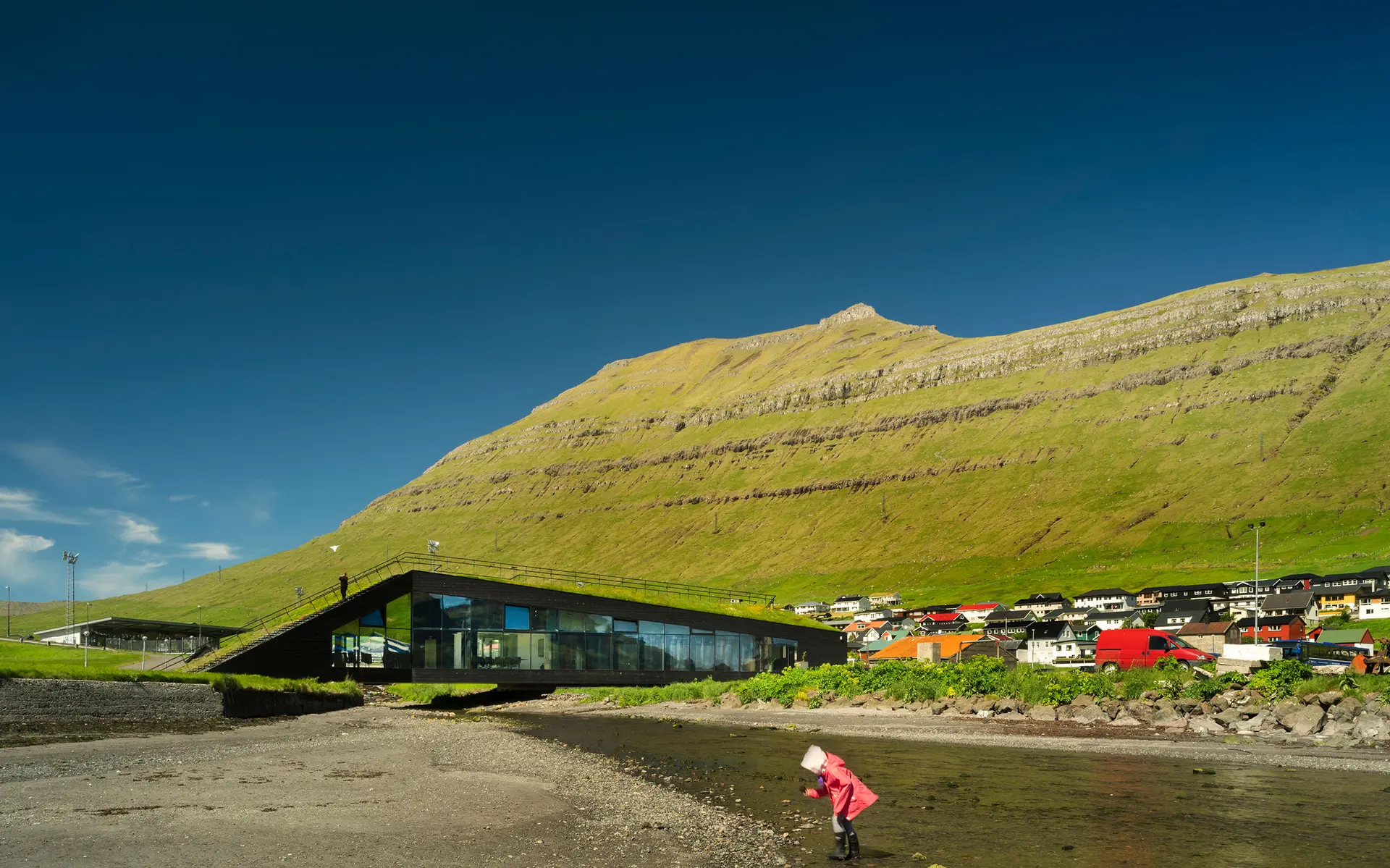Re-establishing an old meeting place

Steep cliffs frame the sides of Nordragota, a small Faroese village nestled at the top of a large bay that leads out to the Atlantic. The village is home to just over 500 people, many of whom trace their family’s history there back generations – in some cases, generations that arc back to the Vikings.
Lush greenery dominates the town’s landscape, rolling almost uninterrupted from shore to clifftop. Buildings insert themselves within this landscape rather than defining it themselves, a reverse of the typical relationship and one that gives structures the appearance of being tucked within the land. Even the river and its shore provide an unlikely building site: the low silhouette of Eystur Town steps lightly over the water. The town and the landscape are inextricable, both physically and in tradition and history.
"When you look at old photos, you can see that it was a really nice area with a few small buildings on the shore,” says Ósbjørn Jacobsen, design lead for Eystur Town Hall and Partner at Henning Larsen. "…that was really the area where people met. I even remember being there when I was very young and gathering [with the town] for the national holiday… It was the main plaza of this community.”
But while the flat land of the waterfront made it ideal for gathering, it also rendered it the perfect building site. Processing plants popped up to support the growing fishing industry, and the natural plaza of Nordragota was paved over. Decades later, when the opportunity to design a new municipal structure for the area arose, imaginations naturally turned to the memories of the past.
"The municipality of Eystur wanted to build a town hall there because of that contextual link of ‘that’s where the center used to be in the old days,’" explains Jacobsen. "But I think everyone involved in the project had also a bit of a romantic idea of bringing something back from the old days, making it a bit more like how people remembered the area. I remember we tried, a bit naively perhaps, to remove the asphalt and make a green area instead…to bring that tradition of gathering in open space back."
At first glance, the town hall’s green roof and ash black façade might seem to reference the surroundings. But rather than pull from the landscape, the form and materials of the structure harken back to the community traditions lost in decades of development. The mossy covering that seamlessly connects ground and roof replaces a gathering space that was lost years before, hiding beneath it a new layer of civic life in the Faroe Islands.
"When the weather is good you can see people walk up there and sit for a few minutes," explains Jacobsen. "…it’s quite funny, because, from the top, you can see to the horizon in the far south across the industrial area just below. Somehow here you are raised a bit over the tops. The idea of contextual design, I think it can sometimes open more doors to not relate to just the physical characteristics of a site, but also to the tradition. It’s in that way that it emphasizes how people connect to a place."



